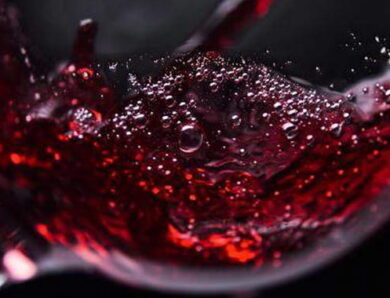How to check the quality of wine at home: ways
The chemical industry is a young industry, but it did not just enter our lives, to make it more comfortable and easier, and brazenly settled everywhere and everywhere, and the most unpleasant - in our refrigerators. Try to guess, hidden behind the inscription, that the product is natural for everyone 100%. Who would have thought, what champagne can be for 5 minutes to cook in your own kitchen? It turns out, it is possible, and champagne, and all other drinks. That's the question, and what you bought in the store, original drink or its forgery? How to choose, and then verify the authenticity of the wine at home?
We choose wine
In principle, everything is very simple. Approach the shelves with vintage wines. For not too high a price you, probably, buy high quality wine. But just in case, read the label carefully. The label of a branded drink contains complete and clear information about the drink. Most often it is reliable.
You can choose wine and easier, but the label and in this case must be studied as much as possible closely. Most often she gives out a fake, if it suddenly fell into your hands. In that case, if you find even the slightest discrepancy, there is reason for doubt.
Shake the contents of the bottle. When stored in wine, a precipitate is formed - tartar, when buying aged wines, it will certainly be at the bottom in small quantities. Everything is simple here, no sediment - no wine in bottles.
so, probably quality natural wine has already been purchased, but doubts still torment? It is not difficult to dispel them. Many lovers of this wonderful drink know, how to determine the quality of wine at home, and you too will be able to test your fragrant purchase. This is not difficult to do.
Ways to determine the authenticity of wine
1. Pour the liquid into a small vial or test tube and lower it into a glass of water. The wine will spill and easily mixed? so, the density of water and "wine" is the same. You bought a fake.
2. Pour into a glass 50 gr wine and 10 g of glycerin. A clear layer of glycerin remained at the bottom? So., the wine is at least dyed with artificial colors, qualitatively paint glycerin in its rich natural color.
3. Pour a little wine into a glass and add soda. If the color of the drink has not changed, you bought artificial wine. A natural drink will change color, since the anthocyanins contained in grapes interact with acids and alkalis.
Now in that, that your wine is real, you no longer doubt it. But how to check the quality of wine at home? There is one reliable way - organoleptic. For a while you need to transform into a sommelier and taste the drink according to all the rules.
Methods of quality control
1. Open the bottle and carefully inspect the stopper. It must be elastic, odorless mold.
2.Foam the contents of the bottle well and fill the glass by a quarter or half. The foam on the surface of the wine disappears slowly, going to the center - so, the quality of the wine is good. Natural wine.
3. Pour a little alcohol into the glass and turn it slightly, so that traces remain on the walls. If wine quickly glass from the walls, leaving no traces, it is a low-quality product with a high content of chemical additives. But remember, that to create traces,»Tracks»,»Legs», "Slide", so-called stains on the glass, just add a little glycerin. And you will have "legs", even if the bottle is not the best drink. The attitude to this method of determining the quality is awe-inspiring, that the width of the "tracks" determined the age of the drink, than they are thinner, the older the drink.
4.After, as you opened the bottle, leave it for a while to "breathe". The pungent smell of alcohol will quickly disappear. Pour the drink into a glass no more than half and inhale its aroma. It is called a "bouquet" and it is formed during long storage. If instead of a "bouquet" you smell alcohol, alcohol is poorly sustained and the "bouquet" did not have time to form.
5. A reliable way to determine the quality of a drink is to taste it. Good wine has a pleasant taste and no less pleasant aftertaste. Poor quality drinks and young wines have no aftertaste.
In these ways you can check the quality of grape wines.
Evaluation of wine quality is carried out organoleptically on a ten-point scale. Evaluation 10 points have vintage wines, to 6 points - wines are more or less good. 1 the point is awarded to wines, which cannot be used.
Homemade drinks are an island of stability and ecological purity, if you did not spoil it yourself. The quality of house wine is determined simply, what are the taste qualities of wine, such are his virtues. And you can not even worry about fusel oils, fragrances, preservatives and other not the most useful additives, which can be hidden behind beautiful factory labels and pleasant taste for the inexperienced person.
If the wine is prepared correctly, it tastes great and without foreign components.

